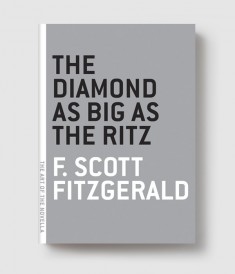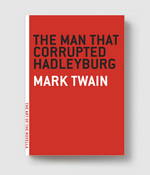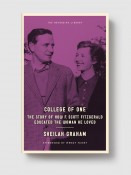
List price: $11.00
- Pages80
- ISBN9781612192208
- Publication dateJanuary, 2013
- Categories
- Booksellers
- Media
- Academics & Librarians
The Diamond as Big as the Ritz
F. Scott Fitzgerald
Part of The Art of the Novella
“At any rate, let us love for a while, for a year or so, you and me. That’s a form of divine drunkenness that we can all try. There are only diamonds in the whole world, diamonds and perhaps the shabby gift of disillusion.”
Although this novella stands out from his body of work in that it’s a playful yet sinister fairy tale, it brilliantly fuses F. Scott Fitzgerald’s ongoing lush fantasies about the extremes of wealth with his much more somber understanding of what underpins it. Loosely inspired by a summer he spent as a teenager working on a ranch in Montana, The Diamond as Big as the Ritz is Fitzgerald’s hallucinatory paean to the American West and all its promises.
It’s the story of John T. Unger, a young Southerner who goes to Montana for summer vacation with a wealthy college classmate. But the classmate’s family proves to be much more than simply wealthy: They own a mountain made entirely of one solid diamond. And they’ve gone to dreadful lengths to conceal their secret … meaning John could be in danger.
But the family also has a daughter, lovely Kismine, and with her help, John may yet escape the fate her family has meted out to all their other guests so far …
***

Melville House HybridBooks combine print and digital media into an enhanced reading experience by including with each title additional curated material called Illuminations — maps, photographs, illustrations, and further writing about the author and the book.
The Melville House Illuminations are free with the purchase of any title in the HybridBook series, no matter the format.
Purchasers of the print version can obtain the Illuminations for a given title simply by scanning the QR code found in the back of each book, or by following the url also given in the back of the print book, then downloading the Illumination in whatever format works best for you.
Purchasers of the digital version receive the appropriate Illuminations automatically as part of the ebook edition.




